When Vince Lombardi took over the Green Bay Packers everyone asked him what he was going to do:
“Are you going to change the playbooks?”
“Are you going to change the players”
“What are you going to do differently?”
To these questions he replied:
“I’m not going to change anything, we’re just going to get brilliant on the basics. Our opponents may be able to predict exactly what we’re going to do, but we’re going to be so good at the basics that they won’t be able to stop us.”
The Back To Basics Mass & Power Barbell Workout
When it comes to building a muscular physique the one key element that you must focus on is getting stronger. A bigger muscle is a stronger muscle (and vice versa). When you are at the gym just look around at the regular members. I’m willing to bet that the guys who are the biggest and the most muscular are also the ones who are lifting the heaviest weights.
One of the problems that a lot of people run into when training for strength gains is doing way too many exercises. They are spreading themselves too thin and burning out on the sheer volume of training. Part of the problem is the environment that most of us train in.
Most commercial gyms these days have so many fancy padded machine exercises all over the place that people are getting away from the basic bread & butter barbell exercises.
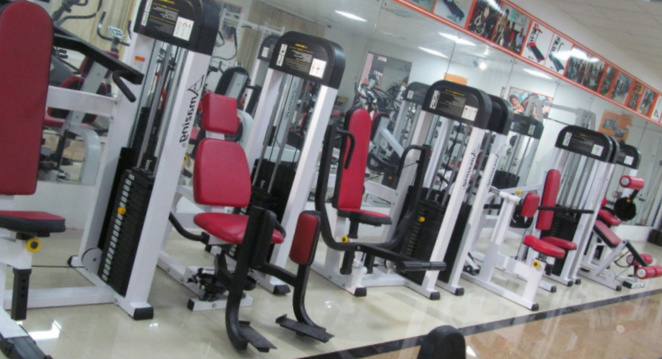
Now don’t get me wrong, I’m a big fan of machine exercises and I feel they have their place in the gym. Machines are great for isolating specific muscles, good for working around injuries, and they can help add variety to your training. Plus there are some exercises that can only be done on machines that can’t be duplicated with free weights (i.e. pull downs, push downs, leg press, leg extensions, etc.).
However, over reliance on machine exercises will actually make you weaker, instead of stronger. The reason I know this is because I’ve personally fallen into this trap myself several times over the years. Opting for Leg Press over Squats. Doing the Hammer Strength Bench Press instead of the Barbell Bench Press. Machine Rows instead of Barbell Rows, etc…
Now you can still make “strength gains” in these machine exercises. However, those strength gains don’t always carry over into your free weight exercises. Machines balance and support the weights for you, all you have to do is push or pull along a guided track, it’s not a true strength builder.
But when you make strength gains in basic free weight exercises, those gains almost always carry over into your machine exercises. Free weights put you in a real 3 dimensional environment where you not only have to push or pull the weights, but you have to balance and support them as well.
Barbells and dumbbells can twist, turn, wobble, etc. and this all leads to a higher level of neuromuscular activation and thus more stimulation for building strength and muscle mass.
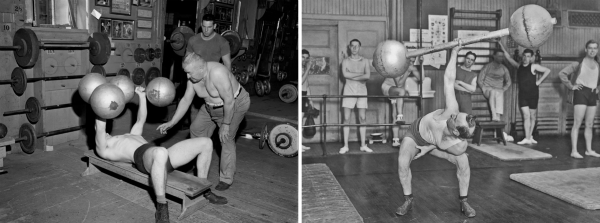
For our Back To Basics Mass & Power Barbell Workout we’re going to put the machine exercises on the back burner. Instead we are going to focus on only doing a select few powerlifts and working the crap out of those lifts!
The goal for each workout is simple:
To Lift More During This Workout Than You Did For Your Last Workout.
If you can consistently beat your previous best lifts over and over again, even if it’s just getting an extra rep or adding an extra 5 pounds to the bar, it will all add up overtime and equal some Big Lifts and some Big Muscles. Now what we consider “big” is all relative, I’m not saying that within in the matter of weeks you’ll be ready to pose down on the Mr. Olympia stage or anything like that. But by getting stronger on the basic lifts you’ll be able to blow past your own training plateaus and set some new personal records in size and strength.
So without wasting anymore time, let’s cut the small talk and get right into the “Meat & Potatoes” of the program…
Focus On The 3 Basic Powerlifts…
The workout will consist of:
– Squats
– Bench Press
– Deadlift
That’s it, nothing more, nothing less!

These are the core powerlifts. The big 3 (squat, bench, and deadlift) are the competition lifts in powerlifting. Nothing else can sum over up overall brute strength and power like those 3 lifts. They lay the foundation to any good muscle building program.
Workout 3 Days Per Week…
The workout itself is very simple. You’re going to hit the gym 3 days per week (or every second day). The main thing is that you take a full day of rest after each workout before training again.
Warm Up Before Every Workout…
Before each workout you’re going to do a proper warm up. I suggest doing 5-10 minutes of cardio such as a rowing machine or an elliptical with the moving arm handles. Ideally you would do something that moves your entire body, elevates your core temperature, and gets the blood flowing.
After your cardio you’ll do some rotator cuff rotations, arm circles, bodyweight squats, etc. to make sure all your major muscles are limber. I’ve got a good video on YouTube that shows how to do a proper warm up routine posted below…
Note: if you can’t see the embedded video clip above,
you can watch it directly on YouTube at:
http://www.youtube.com/watch?v=q52_IF-qoDc
Once you are all warmed up you’re going to head over to the power rack and get set up for your first set of squats!
Sample Workout Routine…
For each exercise in our basic mass and power workout you’re going to do a few progressively heavier warm up sets, pyramiding up to your top working weight, then you are going to do 2 sets of 5 reps with your top working weight.
Now for example purposes, let’s assume your top working weight in the squat is 225 pounds for 5 reps. Your weights, sets, and reps may go like this:
Sample Squat Workout:
1st set – 95 pounds x 10 reps (warm up)
2nd set – 135 pounds x 8 reps (warm up)
3rd set – 185 pounds x 5 reps (warm up)
4th set – 225 pounds x 5 reps (working set)
5th set – 225 pounds x 5 reps (working set)
After squats you’ll move on to the bench press. And for our example, let’s assume your top working weight in the bench press is 185 pounds for 5 reps. Your weights, sets, and reps may go like this:
Sample Bench Press Workout:
1st set – empty bar x 10 reps (warm up)
2nd set – 95 pounds x 8 reps (warm up)
3rd set – 135 pounds x 5 reps (warm up)
4th set – 185 pounds x 5 reps (working set)
5th set – 185 pounds x 5 reps (working set)
After bench presses you’ll move on to the deadlift. And for our example, let’s assume your top working weight in the deadlift is 275 pounds for 5 reps. Your weights, sets, and reps may go like this:
Sample Deadlift Workout:
1st set – 135 pounds x 10 reps (warm up)
2nd set – 185 pounds x 8 reps (warm up)
3rd set – 225 pounds x 5 reps (warm up)
4th set – 275 pounds x 5 reps (working set)
5th set – 275 pounds x 5 reps (working set)
That’s it, those are the 3 basic lifts that you are going to do 3 days per week. Your training goal is very simple, each workout strive to add 5 pounds to the bar and still perform all the sets and reps. If you are able to up the weight by 5 pounds and still get all the required sets and reps with good form, then up the weight again for your next workout and keep progressing in this fashion. However, if you get stuck and don’t hit 5 reps on one of your working sets, or you had to get help from a spotter, keep the same weight for your next workout.
When planning out a program like this it’s a good idea to be little conservative when selecting your starting weights. I’d much rather you go through the workouts feeling strong with the weights and knowing that you could do grind out an extra rep or two if you really had to. This will allow you to build momentum in your training and allow you to keep increasing the weights by those 5 pound jumps for several workouts in a row before hitting a plateau.
The slow and steady approach to strength gains is much better than starting off too heavy and hitting failure right off the bat and having to drop down in weight. Getting “beaten by the weights” and having to lighten the load is no fun. But feeling strong and making those small frequent jumps in weight helps keep you motivated. A lot of people ignore this aspect of training, but being motivated, feeling strong, and actually looking forward to your workouts is half the battle. That’s what keeps you on track towards your muscle building goals.
Advanced Training Tips…
If you are a more advanced lifter and can handle heavier weights than what I have listed in the examples, than you’ll most likely need to perform more warm up sets. The heavier you lift, the more warm up sets it will take in order to reach your top working weight.
You may also want to cycle the order that you perform the exercises, so overtime you can hit each exercise at the beginning of your workout when you are fresh and at your strongest. For example, you may start your first workout with squats, bench presses, and deadlifts. The next workout you could do bench presses, deadlifts, and squats. The following workout you could do do deadlifts, squats, and bench presses, etc. And just keep rotating through the exercises like that.
The use of a good powerlifting belt and lifting chalk will really help, especially as you build up the poundages for those top heavy working sets. You could even use lifting straps to help re-enforce your grip on the deadlifts if needed. But make sure to do all your warm up sets without lifting straps so that you’ll still be able to build up your natural grip strength.
What About Working The Rest Of The Body…
As I’m writing this I can already hear the comments coming from the peanut gallery:
– “What about all my other muscle groups?”
– “What am I going to do for biceps?”
– “What about calves?”
– “Shouldn’t I be working my abs?”
– Etc…
The biggest problem that people run into when following a basic mass and power workout program is that it “Seems Too Basic”. Most people don’t see the forest for the trees. They over complicate things by always looking for new exotic exercises, magic formulas, unique training theories and new age programs. Meanwhile, the answer to their problem is very often staring them right in the face, but they overlook it because it seems too obvious.
Too many guys get bogged down in the minor details before they even have a solid foundation to work with. To give you a real world example of this, let’s look at the process of building a house. If you were building a house would you start off worrying about what color you are going to paint the walls before the foundation has been laid and the house has been framed? Probably not… Now I’m not saying that the color that you paint the walls isn’t important, but it’s a very specific detail that only really matters way down the line once the rest of the house has been built.
The same applies with building your body. It makes no sense to focus on the details of your physique and doing specialization training when you weigh a buck fifty soaking wet. Focus first on putting some meat on your bones and building up your base strength.
A good goal to strive for is to get your strength up in the core powerlifts so that you can bench 1 and 1/2 times your bodyweight and squat and deadlift 2 times your bodyweight. Focus on hitting those numbers before worrying about how to bring out the detail of your serratus anterior or isolating your vastus medialis.
It makes no sense to worry about sculpting your bicep peak or isolating the lateral head of your triceps if your arms barely stretch the tape measure to 13 inches. Pay your dues in the gym with some hardcore training on the basic powerlifts and you’ll pack more meat on your guns than biceps curls ever could.

“But Lee I just have to work my… (arms, abs, calves, etc.)”
If the thought of not directly training a particular muscle group is just driving you nuts and keeping you awake at night. Then you can follow a modified version of this Back To Basics Barbell Workout and take 1 day per week to do whatever muscle isolation exercises you feel that you absolutely “must do”.
If you just have to do bicep curls, tricep push downs, side lateral raises, crunches, calf raises, etc… Simply take 1 day per week to do those exercises.
For example, if you are working out 3 days per week this is how your training split may look:
Monday – “Back To Basics” – train the 3 powerlifts
Tuesday – Rest
Wednesday – “Isolation Workout” – do your isolation moves
Thursday – Rest
Friday – “Back To Basics” – train the 3 powerlifts
Saturday – Rest
Sunday – Rest
This way you’ll be able to satisfy your urge to isolate specific body parts. But in all honesty it probably won’t be any more effective in the long run than simply doing the 3 basic powerlifts.
Conclusion…
You’ll be amazed at the improvements you can make in your overall muscular development if you just take a few months and really focus on improving the 3 basic powerlifts. If you were to add 30-50 pounds to each of these lifts over the course of the next several months, just think of how that would impact your overall muscle density?
And when you zero in and target all your training efforts on just a few basic lifts, making these kinds of strength gains within a few months is very realistic. Especially if you have been doing “marathon workouts” and trying to work the muscles from every angle possible with every exercise imaginable.
So if you are looking to take your physique to the next level of muscular development, give this Mass & Power Barbell program a try. Simplify your approach, focus on making strength gains, and get brilliant on the basics!
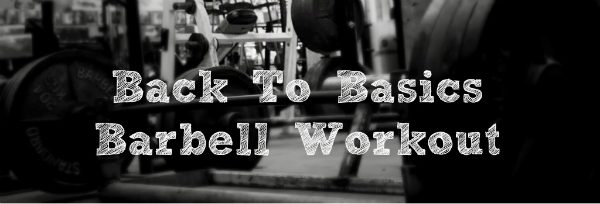





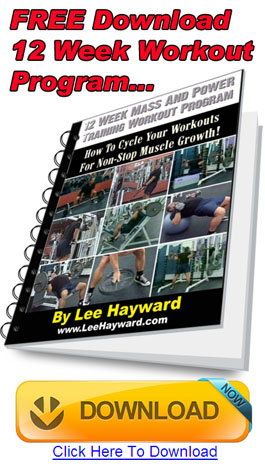
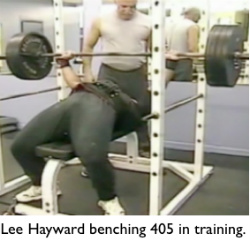
107 Comments
Comment navigation
Bali
Hey Lee
Can focusing too much on compound exercises be disadvantageous? There’s a lot of talk about them being superior as they have more neuromuscular activation than isolation exercises but can this advantage also be a bane? Can performing only compound exercises easily lead to overtraining?
leehayward
Yes, eventually a routine like this will run it’s course and you’ll need to go back to a more “normal” workout routine with less intense exercises. But you can usually ride it out and make awesome gains for 6-8 weeks before this happens.
beej
is it ok to do cardio in between the back to basics workouts? like run 5-15k?
Omar
Don’t you think that squatting and deadlifting in the same session quite draining on the system and CNS ? Especially if you are going ALL OUT on the working sets.
blaise Corsini
its good to hear some sanity about weight lifting. I’ve given up all those isolation exercise and confined myself to the 3 except overhead press (too dam tired by the time I finish the 3). I can squat and dead lift 220lbs (my frame is only 167lbs) but my benching is way behind at 88lbs. I can confirm that the strength gains are phenomenal. I couple all this with chin-ups and dips and take a 2 day break still using the 5X5 formula. I set aside 1 day for 2 hours cardio.The calorie intake goes through the roof. Right now I’m stuck with the last 15lbs of belly fat that is meaner than a donkey. Any ideas?
Nick
Hey Lee, what kind of nutritional plan should I follow if I decide to pursue this type of training? Would it be something similar to the Squats and Milk program?
gary
Omar,
no i personaly think straight from your squats , and then blast your deadlift is good for your stamina, and its a big positive on strength building .
Charly
Great article Lee,
but i have a question: can this program be done in summer time ?
cause i’m an ectomorph and i heard that doing a hard program in the summer can burn ur muscles.
best regards.
Omar S
Absolutely superb article!
Peter
Lee, you say “A good goal to strive for is to get your strength up in the core powerlifts so that you can bench 1 and 1/2 times your bodyweight and squat and deadlift 2 times your bodyweight.”
Do you mean lifting that weight for my 1 rep maximum? Or should my goal be to bench press 1 and 1/2 times my body weight for 5 reps?
Thanks for a great article.
Charles
« It makes no sense to worry about sculpting your bicep peak or isolating the lateral head of your triceps if your arms barely stretch the tape measure to 13 inches. »
But how will the basic exercise help in stretching the tape beyond 13 inches if the exercise arn’t hitting the biceps or the triceps (ok! maybe the triceps a bit with the bench) ?
firas
can i do this program 5 days a week. or do i need a rest day between training days.
Thanks
Firas
Bob
Nice article Lee.
I personally stick to the big 3 as the core of my routine (plus overhead pressing). However I do them on different days – save squat and overhead pressing, which is done on the same day. Throw in two or three assistance exercises and voila!
The great thing with these is that when you are going for a new PR for one; the others will usually go up as well.
The odd thing I’ve found is that benching will go up with either squat/deadlift; but when I’m trying to get my squat up my deadlift usually suffers, and vice versa. Any insight towards this? Or could it just be me? (I’ve been told that I’m biomechanically built as a deadlifter)
Thanks Lee!
Per
firas,
If you read the article, it clearly says:
”
Workout 3 Days Per Week…
The workout itself is very simple. You’re going to hit the gym 3 days per week (or every second day). The main thing is that you take a full day of rest after each workout before training again.
“
Andrew
Lee,
Will this workout provide sufficient back mass development? And will this help you lose weight?
Rick
Doing heavy squats and deadlifts kill my lower back in the same week. My lower back can make progress every 10 days. Suggestions?
Eliot
Great post Lee, how long are your rest periods between sets?
Also would you recommend adding in pull-ups or lat pull downs to build up your upper back muscles?
kamal
if i do power workout then what my nutritional plan and rest period
Kristinn
Hi Lee
Good article, as expected. My main target is to decrease my body fat and become leaner. I´m maybe around 20 – 25% right now. Will this help me reaching the 15% target faster, or should I stick to high intensity training ( 8 – 12 reps extension sets right now) and low calorie nutrition?
Regards,
Kristinn
Fred
Hi Lee,
Great post , I love to hear coaches telling people to keep it simple and go back to the basics.
On the other hand, one critic i’d like too make is you should write your next post about variation of squat movements. A lot of people have a really poor form performing the basics (either because of lack of technique or lack of flexibility in the hips and ankles) which are not that basic to learn lol. How about posting about front squat , single leg squat , front dumbell squat as alternatives to regular back barbell squat? I’m sure it would help a lot of your readers and fans as you often hear about back problem and stuff.
A lot of recognized strength and conditionning coaches gave up on regular squat because of poor execution and complaints from athletes or because other variations stress stability, mainly in the hips, and balance a lot more.
For my part and do a lot of power clean and jerk and power snatch, works the whole body, gains a lot of time, kinda hard to master since it needs tons of technique to learn the moves but when you got it right and get to lift 225lbs over your head you feel like the king of the hill and people look at you differently lol.
Fred
Michael H
Bali,
I Only ever do compound lifts, ranging from the basic squat to rope pull-ups, handstand pushups, high pulls, ETC. The last isolation exercise I used was a standing barbell curl and even that is barely considered an isolation exercise. The oldtime strongmen, such as John Davis, Steve Stanko, John Grimek and several others only ever used big lifts and just look how big they got! By the way… John Grimek competed in bodybuilding during his time and he never used any isolation exercises. That’s good enough for me!
Also there are a lot more compound exercises than you might realize. Ever performed a Power clean and jerk, Snatch grip high pull, barbell snatch? Oh and then sometimes when one has hit a plateau, how about trying the dumbbell version of the compound exercise?
Endless solutions….
leehayward
The amount of cardio you do will vary greatly depending on if you are trying to lose bodyfat or gain muscle. But I’d recommend a minimum of 3 cardio sessions per week for about 30 minutes each, even when in a mass building phase.
leehayward
No, because the overall workout volume is very low. We are doing a total of 8 working sets. Most people do more than that during a “normal” workout program.
Besides, powerlifters often combine training squats and deadlifts in their workouts because they have to do both lifts on the same day in competition.
Stu
Bali,
Other than Deadlifting do you know of any programs that can build massive forearms fast using barbells and dumbells.
leehayward
When it comes to training for fat loss the solution is almost always to focus on your nutrition. Everyone thinks they “eat healthy”, but that’s not enough for serious fat loss. If you want to low down on nutrition for fat loss and to see what it really takes to get ripped, I suggest you check out my Extreme Fat Loss DVD Program at: http://www.LeeHayward.com/dvd/xfatloss.htm
leehayward
Yes, a high calorie mass building eating plan should accompany a mass and power building workout program. I’ve got some good foundational nutrition tips that you can follow covered in my Bodybuilding Nutrition Made Simple Program at: https://leehayward.com/blog/free-stuff/
leehayward
You can workout anytime of the year. If you are working out at a good gym they will have fans or air conditioning to keep you cool in the summer.
leehayward
That would be for a one rep max lift.
leehayward
Doing heavy basic lifts like this will help you get bigger and stronger all over. If you gain 10-15 pounds of solid muscular bodyweight you’ll gain approx. 1 inch to your upper arms regardless if you do any curls or not.
Heavy deadlifts work the biceps hard due to the poundages being lifted, even though you are not “curling”. Bench presses and overhead presses heavily work the triceps.
leehayward
Take a day of rest between each workout. If you want to do something on your off days, do some cardio. But keep your strength training to 3 days per week.
leehayward
It’s hard to say for sure, but for the most part squats and deadlifts use the same major muscles (i.e. spinal erectors, hips, glutes, hamstrings, quads, etc.)
So usually as you get stronger in one exercise you’ll find that the other also gets stronger. But based on your build you’ll usually be better at one or the other.
leehayward
Heavy squats and heavy deadlifts are 2 of the best back movements you can do. Trust me after you go through a few of these workouts I’d be willing to bet that your back gets sore 😉
As for fat loss, you can pretty much make any workout a fat loss program if you adjust your diet accordingly. But in this case I’d rather use follow this program as a mass and power builder. Consuming a high calorie diet will help increase your strength and mass gains a lot.
leehayward
Well, you could try reducing your poundages initially and gradually build them back up while doing the higher training frequency. One thing you’ll find is you’ll be able to recover a lot better from these exercises if they are the only exercises you do. Most people will include squats and deadlifts in their workouts, but they’ll also do a bunch of other exercises for these same muscle groups that all take away from your recovery time.
leehayward
Rest as long as you feel you need between sets. For warm ups a minute or two rest will be plenty. For the heavy working sets you can rest 3 minutes or more if needed.
As for adding in extra exercises, don’t do it. The simplicity and limited exercises is what makes this program work. Go back to the above article and re-read the section on:
“What About Working The Rest Of The Body…”
leehayward
This will help build more muscle mass, which in turn can help when you switch to a fat loss program. But I wouldn’t recommend this program as a Pure Fat Loss Routine. For fat loss I’d recommend a higher volume training program.
leehayward
Great suggestion, I’ll be sure to cover some squat variation videos in the future… 😉
leehayward
I agree there are dozens upon dozens of exercises that we can include in our workouts. But for the purpose of this article and workout we are limiting it to just 4 lifts.
leehayward
I’ve got some basic forearm exercises outlined at: http://www.leehayward.com/exercises/forearms/index.htm
T
Hi Lee,
This is almost identical to the strong lift 5 x 5 that I am currently doing.
Good info on the warm ups!
Thanks
T
Christian
Hey Lee,
I read your article and you say stick to these basic exercises but i feel that if i do that it would not push me hard enough if I only do those basic exercises. Also, I tend to isolate muscle groups in my workouts (ex: Mondays are chest and triceps and i will do 3-4 exercises for each, Tuesdays are Back and Biceps doing the same 3-4 exercises for each muscle group etc.). I generally gauge the effectiveness of my workouts by how exhausted i am by the end and how sore i am the next day (i also always do cardio before my strength training sessions). Another thing I would like to add is that your advice (which by the way is very helpful i incorporate several of your exercises in my workouts) seem to be geared toward skinny guys who can’t gain weight. The I used to be fat up until about junior year of high school because i used to be a lineman until i became a linebacker/tailback junior year and took in extra calories (i am a senior and just turned 18) and i have decided not to play in college. I have gone from 220 during the season to 180 in a few months because I use the primal blueprint by Mark Sisson to know what to eat and it works very well. The thing is that I am powerfully built and my problem is not necessarily putting on muscle but getting stronger while keeping fat weight off. But to get to my question, should i simply incorporate the rep amount on those basic workouts you suggest and continue to isolate muscles? And how do i know if i am over training?
I really appreciate all of your advice,
Christian Tucker
Tam
I understand keeping it simple and doing the important lifts like deads squats bench and overhead press, but not doing pull ups for 2 months not sure bout that,i would ad the pull ups to make it more complete.
Isaac Forgey
Lee,
I could’nt agree more!!! I have always been a HUGE fan of the basic stuff. Lets not forget what K.I.S.S. stands for… Keep It Simple Silly !!! With any level of muscle and fitness training, if it realy means something to you, how can you not respect and understand the proven old school stuff ??? Look at guy’s like Draper, the shape he is in and at his age !!!! Just like most things these days in an “out do” or to bord society, atleast periodicaly LEAVE WELL ENOUGH ALONE !!! Well time to go hook up to my new and improved electric muscle contractor, NOT!!!
Thanks for the artical Lee,
Isaac
leehayward
You’d be surprised at home much progress you can make by sticking to a simple basic routine of limited exercises. When I look back over my own training I’ve generally made my best and fastest growth spurts by following abbreviated routines such as this. (i.e. 20 rep squat routine, basic powerlift workouts like this one, and even the Blast Your Bench program).
Now I’m not saying that this is the be all end all workout that you are going to do forever. This is meant to be a short training phase that you would do for 6-8 weeks. Afterwards you would go back to doing a more traditional higher volume training program. And chances are you’ll go back to your normal workouts with even more mass, strength, and power then you had before.
When it comes to “bodybuilding” there are 2 primary goals that most people have. Either gaining muscle mass and / or losing fat. We probably all want to do both to some degree or another. But depending on the individual one goal will take priority (i.e. muscle gain or fat loss).
All the information that I share on my website can be categorized into one of these goals. Obviously when I put out a muscle building article, it’s not going to be that relevant to folks looking for fat loss. And vice versa, when I put out a fat loss article, it’s not going to be that relevant to folks looking to gain size.
So obviously you are going to have to pick and choose the training and nutrition advice that you follow based on your individual fitness goals. This particular program that I’ve posted here is a muscle building program, and it isn’t really suited that well for fat loss. For fat loss ideally you’d focus on doing higher volume, and more frequent training in effort to create a greater caloric deficit and burn up more calories.
leehayward
Obviously you can do whatever you like. You could even follow this program for 2 workouts a week and on the 3rd workout simply do those extra exercises that you feel you absolutely need to do.
leehayward
I totally agree, thanks for the comment.
Devin
Great article Lee. Currently I’m doing wendler’s 5/3/1 powerlifting workout with these 4 main lifts plus clean and snatch. I don’t see why anyone would rather do other lifts when your gain the most raw strength and muscle from lifting the heaviest weights using these exercises. Looking forward to future advice.
DEvin
tzahi
this kind of programe is great but there is simillar programes that including the bent over barbell rows too . i prefer to do the programe with the barbell rows to add some pulling movement too beside the deadlift
Jack
I have to agree with what tzahi says. The program as outlined has 2 pushing movements and 1 pulling movement. Bad ratio for shoulder health. Most literature I’ve read recently recommends the opposite–2 pulling movements for each pushing movement. And when you’re working in the 5 rep range, I think this concern becomes even more crucial.
Agree with the basic premise of the program, just think a little is left out.
ruben
hey right on man this is fantasic way to build mass master lee u allways on target good looking out
Sandy
Hi Lee,
Great article as usual, definately going to go back to basics once my back is sorted out. One thing that is not mentioned in the article is rest periods. What is the best rest period between sets? 30 secs, 1 minute, 2 minutes?
Comment navigation